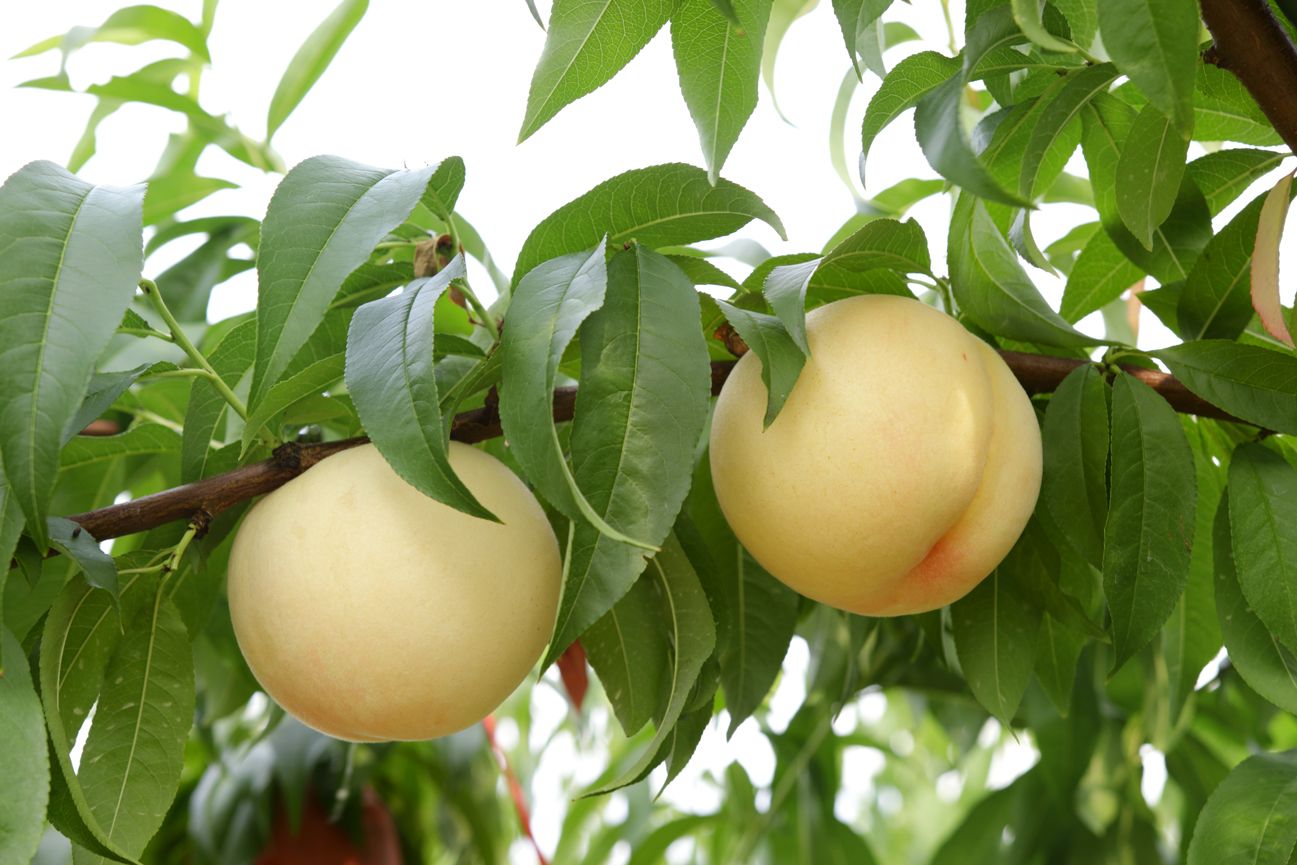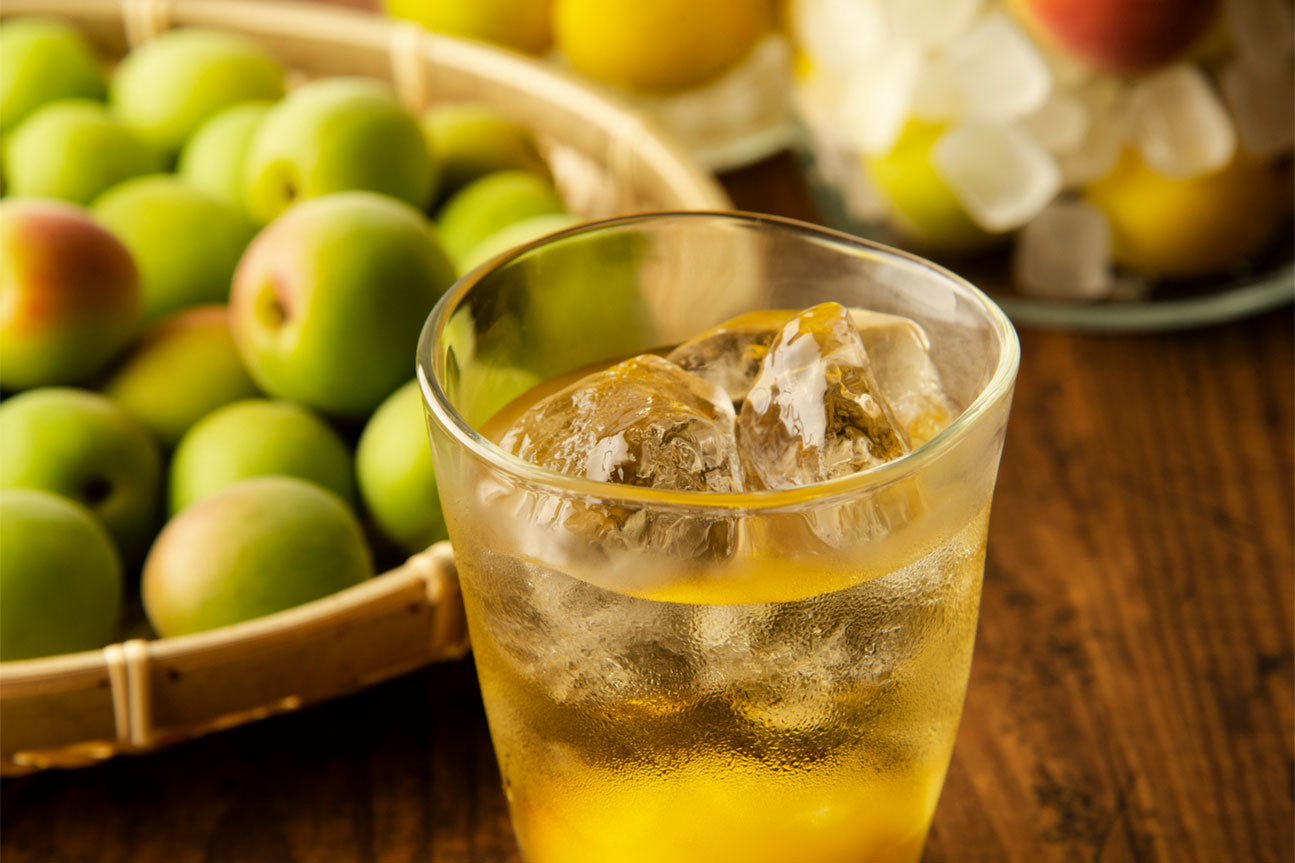
The Cool, Sweet World of Wakayama Umeshu
Sweet, drinkable, and healthy, umeshu is one of Japan’s most iconic liqueurs. It has a growing following globally, winning over even more casual drinkers. Japan’s premier umeshu-producing prefecture is Wakayama, and chefs around the world have begun to explore the new possibilities for taste and texture that Wakayama umeshu offers. We spoke to Stuart Turner, the founder and CEO of UK-based Japanese food and kitchen equipment importer SushiSushi, about Wakayama umeshu’s inroads into restaurant kitchens across Europe and beyond.
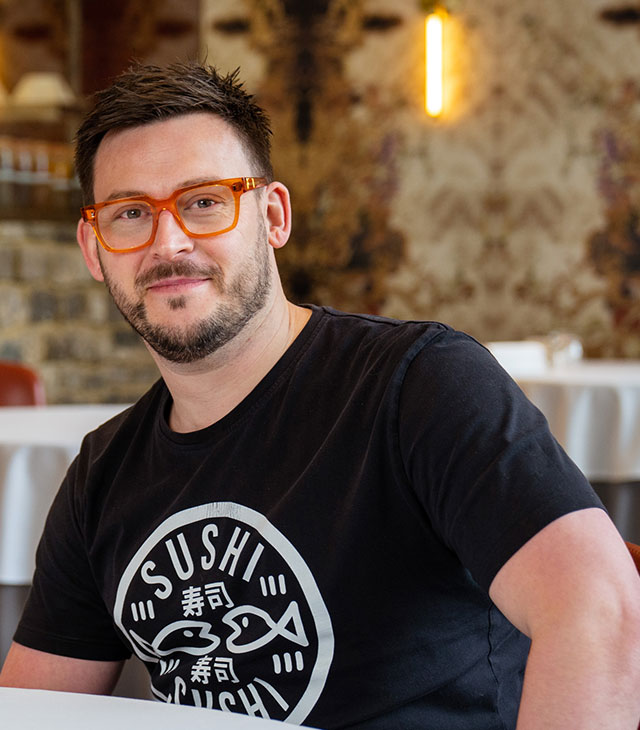
Stuart Turner, founder and CEO of SushiSushi
Umeshu is sometimes translated “plum wine,” but it’s not really a wine, and it isn’t made from plums, either—the fruit known as the ume is actually genetically closer to apricots, even if it has historically been known as the “Japanese plum.” At its simplest, umeshu is made by immersing macerated ume in liquor like brandy or shochu, with sugar added to moderate the tartness.
“That’s the basic story,” says Turner, “but you can go off on all kinds of tangents, like umeshu made with sake or with other fruit blended in for different taste profiles.”
Still, the key ingredient in umeshu is the variety, quality, and ripeness of the ume, and this is where Wakayama Prefecture enters the story. Wakayama has the ideal conditions for growing ume, with heavy rainfall, a warm climate and relatively little temperature variation throughout the year thanks to the Kuroshio Current offshore to the south.
“I spent a week touring Wakayama and found it a fascinating place,” says Turner. “The ume producers there have expertise built up over generations, so they understand the rhythms of the seasons and the right time to harvest.”
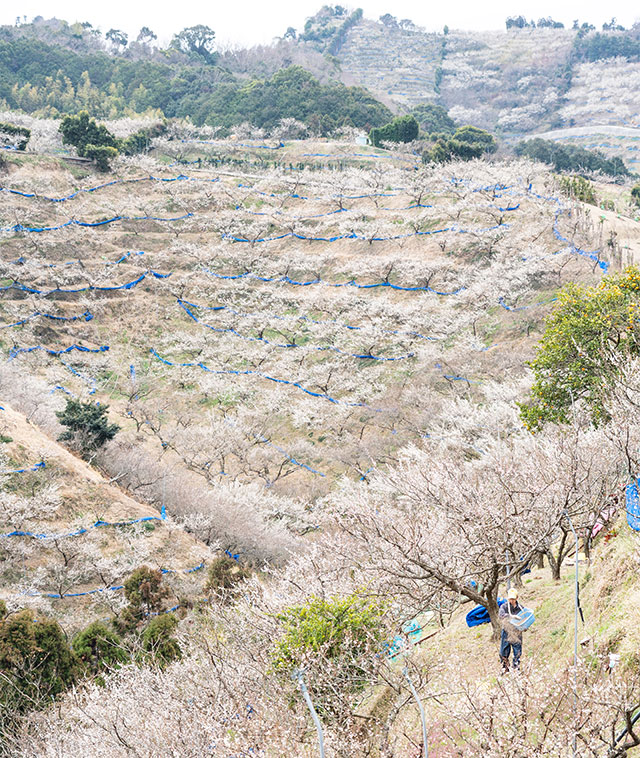
Ume orchards in Wakayama (Photo: Wakayama Tourism Federation)
Wakayama’s ume orchards are at the center of a rich ecosystem refined over centuries to combine productivity with sustainability. The Minabe-Tanabe Ume System named after the two municipalities in central Wakayama where it was developed is recognized as a Globally Important Heritage Agricultural System by the UN Food and Agriculture Organization. Under this system, ume orchards are cultivated on the rugged mountainsides that make up 80% of the prefecture. Above the orchards, mountaintop forests help prevent landslides and provide wood used to make binchotan charcoal. The foothills and level ground below the orchards are used to farm a wide range of other fruits and vegetables. Mountainside reservoirs help ensure a healthy water cycle, and bees thrive amid the countless blossoms, pollinating them in turn. Hawks, owls, and other birds nest and hunt in the forests and orchards, while the reservoirs and water-filled paddies are a home for rare species of salamander and newt.
This rich and robust ecosystem has shaped the traditional culture of Minabe-Tanabe as well. In February, the area hosts the biggest ume blossom–viewing event in Western Japan, with people flocking from across the country to see the mountainsides in full bloom. And on the sixth of June, “Ume Day,” an offering of ume is made to the kami of Kumano Hongu Taisha Grand Shrine. From spiritual observances to traditional foodways, ume plays a vital role in the area’s culture.
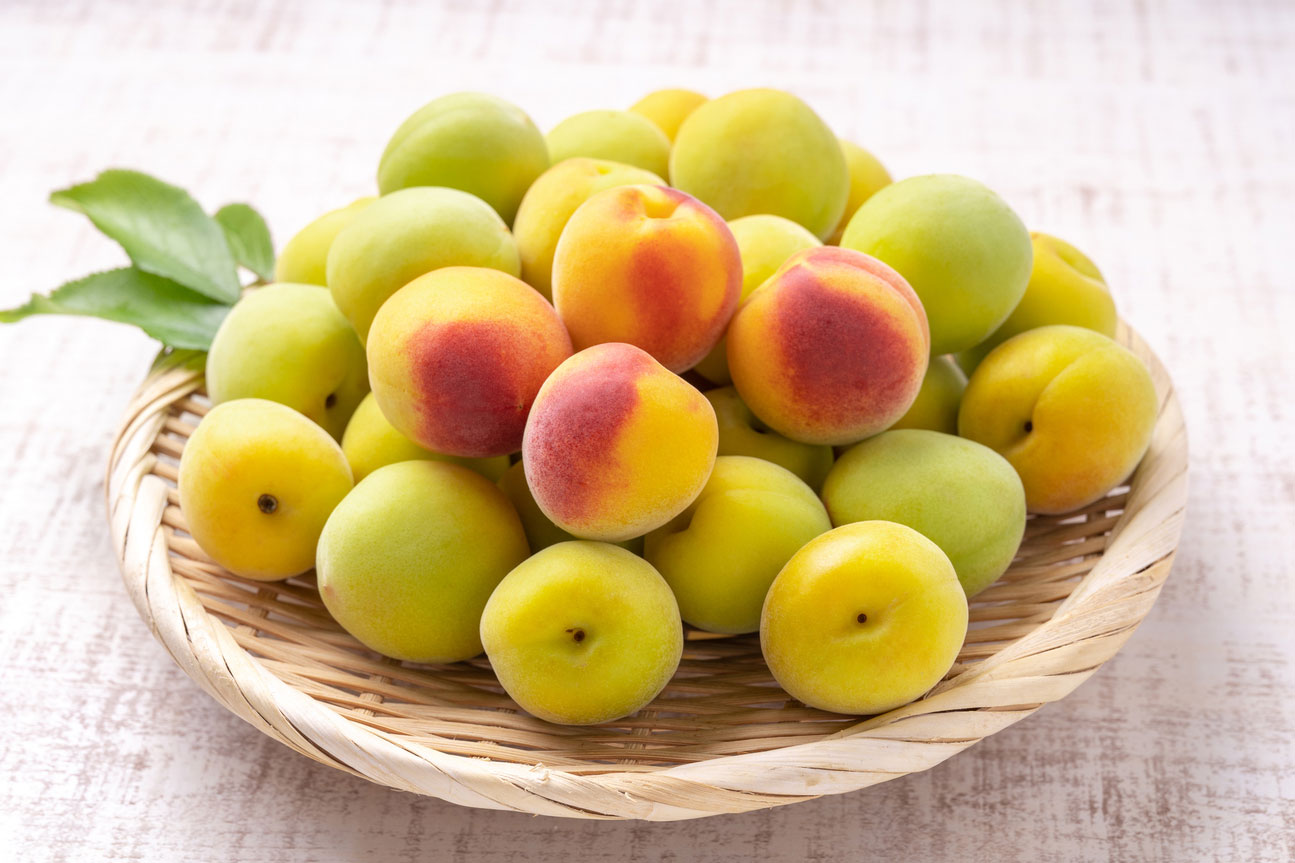
Nanko ume, prized for their tangy flavor and aroma
As a result, Wakayama produces roughly two-thirds of Japan’s ume crop, including rare locally developed varieties. Nanko ume were developed in Minabe in 1950, and offer a superior combination of size, flavor, and aroma. Beni Nanko is an even rarer subvariety, which turns a brilliant crimson as it ripens in the Wakayama sun.
With so much fresh ume of so many varieties available, Wakayama has become a hive of innovation for umeshu as well, with friendly but fierce internal competition. “Everyone making umeshu in Wakayama has their own unique take on it,” explains Turner. “It’s not really the sort of field where you can produce a single hierarchy, either. Various factors like alcohol base, sugar type, lightness of body, and aging produce a diverse range of drinks that each have their own distinctive appeal.”
This diversity has made “Wakayama Umeshu” an officially recognized geographical indication, and SushiSushi curates its umeshu range to showcase umeshu’s possibilities to the fullest. “Every kind of umeshu we carry is the best version of whatever it’s trying to be,” says Turner.
For example, Kokuto Umeshu from Yoshimura Hideo Shoten is made from ripe ume steeped in sake and sweetened with Okinawan kokuto (brown sugar). SushiSushi also carries Yoshimura’s Nigori Umeshu, which is unfiltered, giving it a unique mouthfeel and taste.

Kokuto and Nigori umeshu from Yoshimura Hideo Shoten
Some umeshu use aging as a differentiator. The brewery Nakano BC makes an umeshu called Chokyu which is made from Nanko ume and aged for fifteen years. “This gives Chokyu a deep, sweet taste and a unique dark color,” says Turner.
Nakano BC also makes a Beni Nanko umeshu with a delicate pink color and a unique peachy fragrance. This has won a number of prizes, including Grand Prix at the first Tenma Tenjin Umeshu Festival and silver at the 2024 Japan Umeshu Competition.

Chokyu and Beni Nanko umeshu from Nakano BC
One umeshu that Turner recommends for first-time tasters is the BINCHOTAN NO SHIRABE from Ozaki Shuzo, a brewery founded in 1880. Kishu Binchotan charcoal is also a traditional product of Wakayama, made by the traditional way from trees felled in the forests—another example of tradition and innovation supporting each other in Wakayama umeshu.
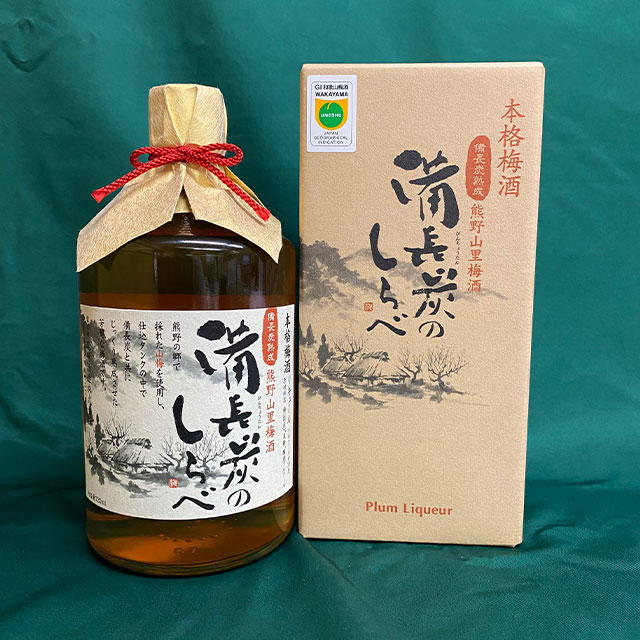
BINCHOTAN NO SHIRABE
Turner’s personal favorite is Hamada Genshu umeshu, which is aged for 5 years and has a relatively high alcohol content. “An umeshu like this is ideal for drinking with soda on the rocks,” says Turner. “You can enjoy it with friends or any time, as casually as you’d enjoy a beer.”
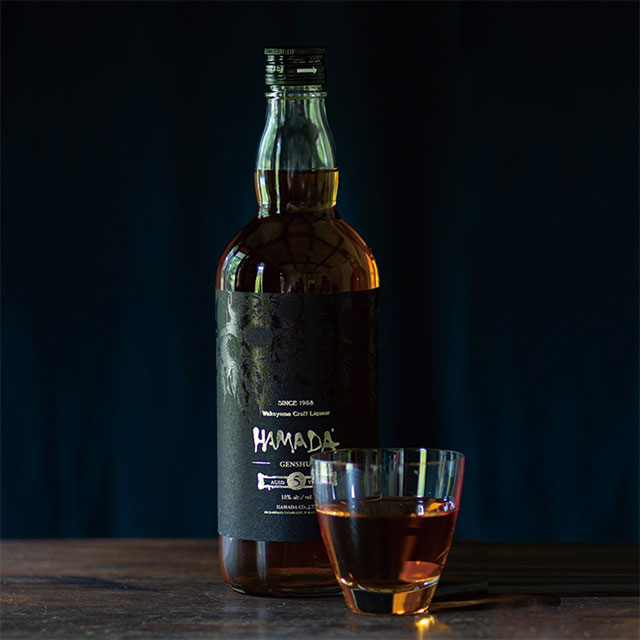
Hamada Genshu umeshu
These and other umeshu are starting to appear on drink lists in restaurants, however many of SushiSushi’s clients find innovative uses for umeshu as an ingredient in other creations.
“Yesterday, a restaurant in Antwerp with three Michelin stars ordered some umeshu for us to use in a dessert,” Turner says. “Another of our clients, in London, makes a kind of affogato with 15-year aged umeshu instead of coffee.” Diners report that the mellow tartness of the umeshu cuts through the creamy sweetness of the ice cream to delicious effect.
It’s not a coincidence that none of these restaurants or even dishes mentioned above are specifically Japanese. “Chefs in the UK are highly innovative, open to interesting and delicious flavors from anywhere and Wakayama umeshu fits into this environment,” says Turner. “Wakayama umeshu has real artisanal craft, and chefs, sommeliers, and diners respond to that.”
With increased demand from restaurateurs worldwide driving further refinement and innovation, Wakayama umeshu looks set to continue its meteoric rise as a liqueur enjoyed around the world.


